Greg recently brought a crape myrtle to a Bay Island Bonsai workshop. The tree has a large trunk and good roots. It also has a big first branch. Boon recommended removing it.
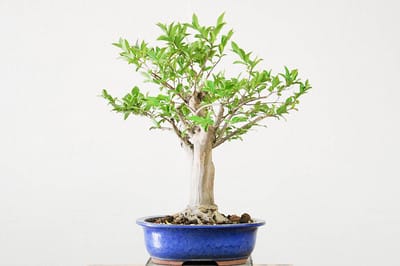
Crape myrtle – front
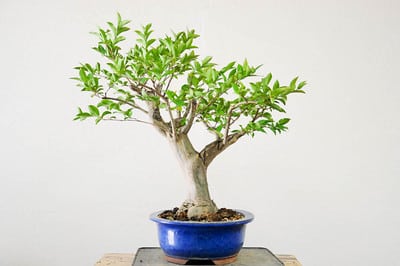
Crape myrtle – left side
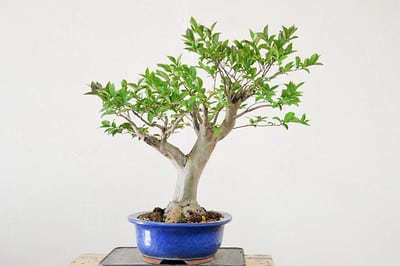
Crape myrtle – right side
Because the branch was so large, Boon recommended making the cut in stages. Greg could cut most of the way through today, and complete the cut next year.
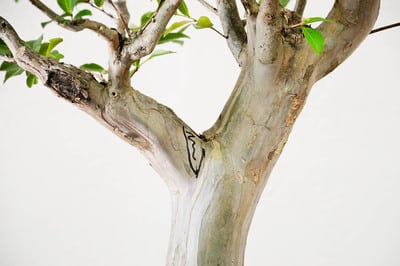
Proposed cut – left side
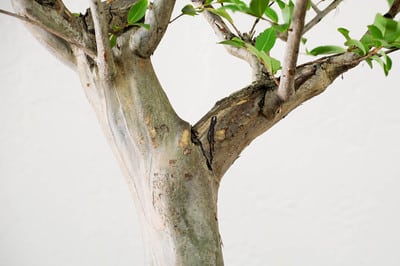
Proposed cut – right side
Removing the branch in stages speeds the time it takes for the wound to heal over. It’s also less stressful for the tree.
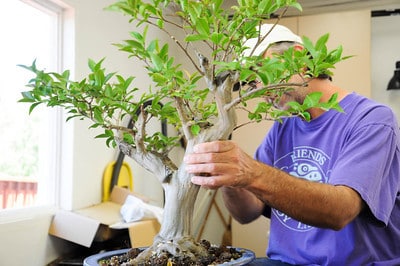
Making the cut with a sharp saw
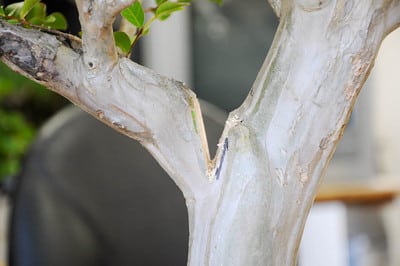
Cut complete
After making the cut, Greg cleaned the edges of the cut with a grafting knife. Even sharp saws tend to leave rough edges. Cleaning the cut with a grafting knife will help the wound to heal quickly.
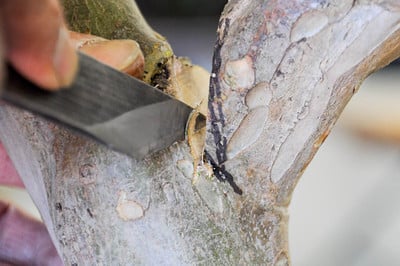
Cleaning the cut
After cleaning the cut, Greg covered the wound with cut paste. In one or two years, the cut will have healed significantly and the rest of the branch can be removed.
I first learned about this technique in Japan at Ebihara’s garden. Here is a photo of a Japanese maple undergoing a similar treatment.
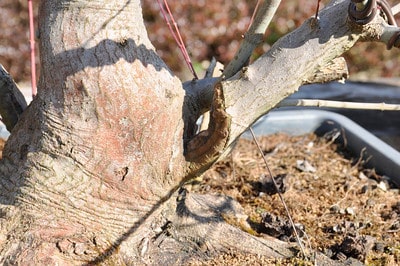
Healing a large wound on a Japanese maple
Subscribe to Bonsai Tonight
New Posts Delivered Every Tuesday and Friday
Maros says
Fantastic technique. If it works well than it can help a lot, I will try it definitely myself. Good post. Thanks.
Justin Rotert says
YES! BRILLIANT! Great technique, I will most surely remember to use it. thanks
bonsaijapan says
Very interesting technique. Thanks for posting it.
Joe.
Jose Luis says
Jonas,
First, let me congratulate you on your beautiful site. I always enjoy your posts. Another way of removing a large branch is using toriki (air layering). Although one might discard the useless branch, because toriki creates a callus on both ends of the removed bark ring, once the branch is removed you will have a mature callus on the cut. In Taiwan, we usually use this to remove unsightly growth on celtis, keyaki, elm, ficus and other miscellaneous trees.
Warm regards,
Jose Luis
xwires says
Hi Jose – thanks so much for the note. Layering is a good option for removing these larger branches. Ebihara has used a combination of these techniques by removing large branches over several years while re-purposing the ends of the branches with his branch grafting technique: http://bonsaitonight.com/2009/07/29/ebihara-technique/
Cheryl Sykora says
Jonas, your site and Peter’s site are the most interesting bonsai sites on the internet.